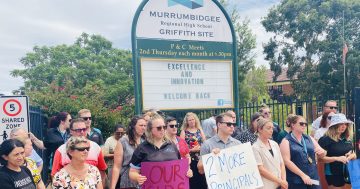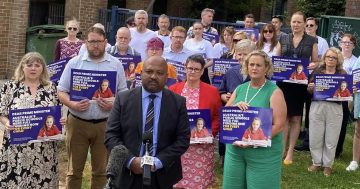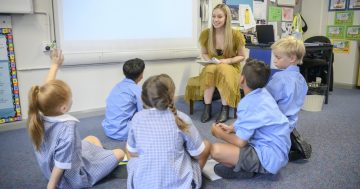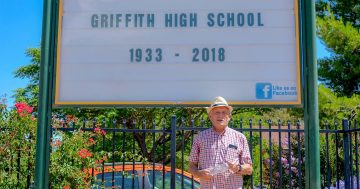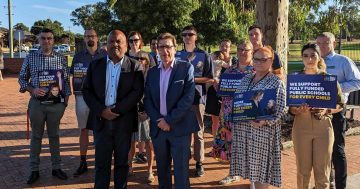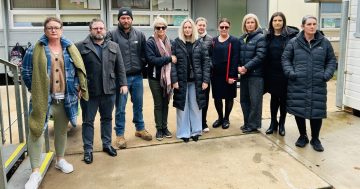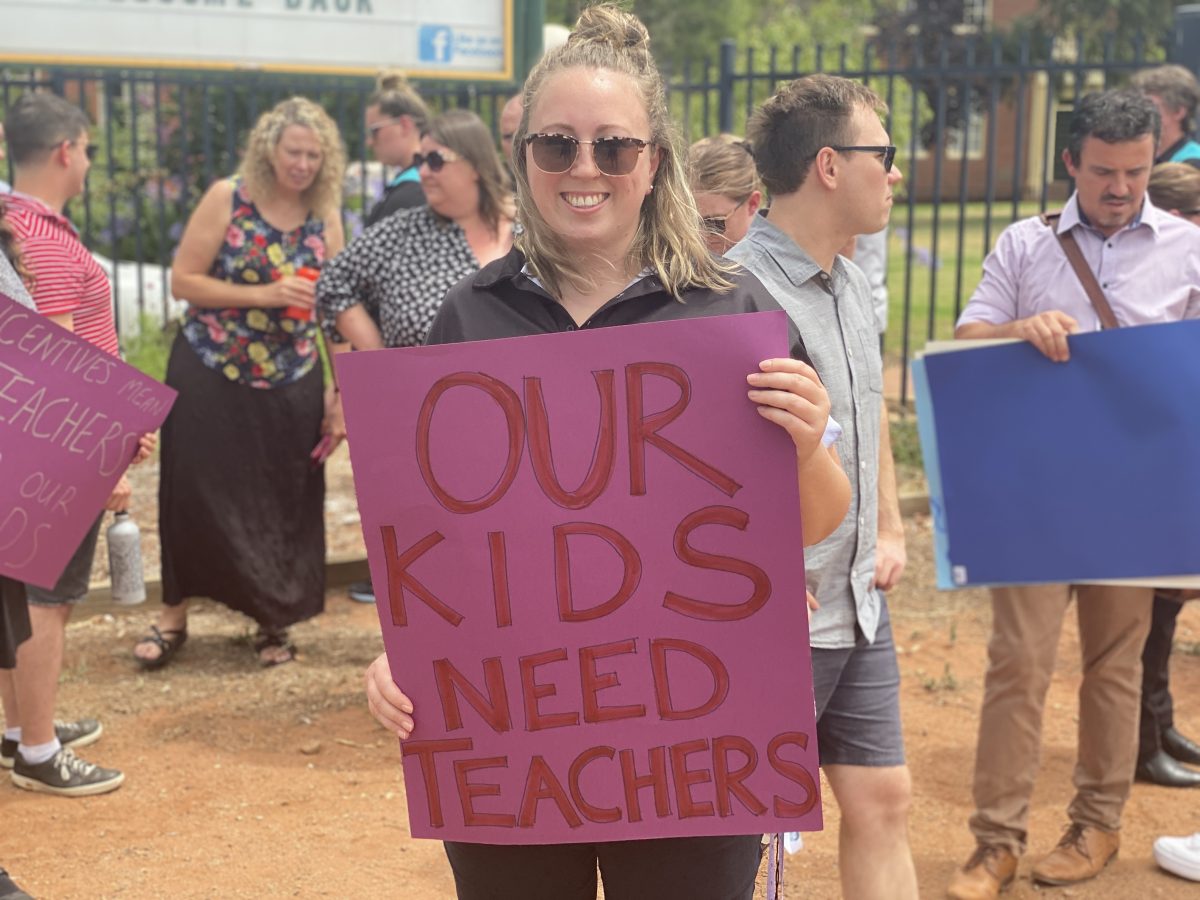
Teachers at MHRS have been protesting for the past few weeks to improve pay and conditions. Photo: Supplied.
Students at Griffith’s only public high school have not had their regular teacher for more than 1500 classes over the past 18 months according to the NSW Teachers Federation, as Riverina children bear the brunt of the ongoing rural teacher shortage.
Murrumbidgee Regional High School (MHRS) has a number of teaching vacancies it can’t fill, meaning students are constantly forced into merged classes or left to muck around on the playground during lesson time when they should be learning.
The NSW Teachers Federation has crunched numbers based on NSW Education Minister Sarah Mitchell’s responses to parliamentary questions on the impact of the ongoing teacher shortage. The union estimates that, over the eighteen months to July 2022, there were 1114 classes with “minimal supervision”, which is essentially NSW Government jargon meaning the students had no teacher and were told to go outside. There were a further 473 lessons where students were lumped together with other classes because they didn’t have a teacher.
NSW Teachers Federation western organiser Brett Bertalli says this is completely unacceptable.
“It’s our most disadvantaged kids who are suffering [due to this neglect]. They’re the ones that keep missing out, but the Perrottet Government does not care for those kids,” he said.
When Region asked the Department of Education for the exact number of classes missed at MHRS, a department spokesperson said they didn’t know.
“The numbers of combined and minimal supervision classes are not recorded centrally. Schools do not maintain a central log of minimal supervision and merged classes across a school year and nor is there a consistent and reliable system level method to do so,” the spokesperson said.
Mr Bertalli was shocked at this response.
“How the hell can the Department of Education know when to adjust staffing practices if they’re not recording data on the number of students missing classes due to the teacher shortages.
“It’s neglectful and irresponsible toward our students and their parents.
“The Government Auditors Office should know the Department of Education is not recording and evaluating their own performance.”
The union has long argued there are not enough incentives for teachers to come to Griffith, meaning schools constantly struggle to attract and retain staff. They point to the fact that teachers in nearby towns such as Leeton and Darlington Point can earn more and get superior benefits.
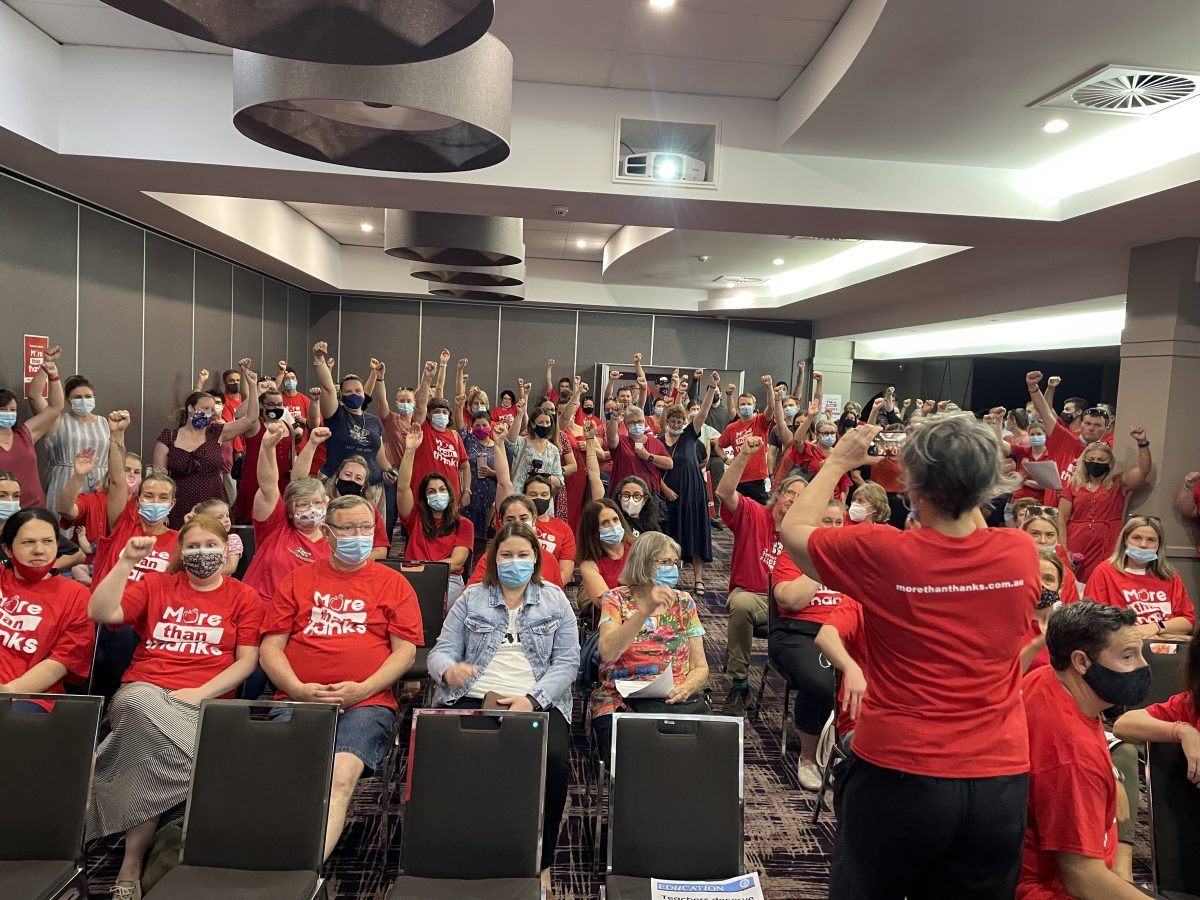
Griffith teachers undertake industrial action in 2021. Photo: Supplied.
Region asked the Department if there were any plans to boost incentives for Griffith.
“NSW offers one of the most generous and comprehensive rural and remote incentives scheme in Australia, with eligible permanent and temporary teachers able to access a suite of financial and non-financial incentives to encourage them to work in our regional schools,” a spokesperson said.
Mr Bertalli said Griffith is no longer unique, with schools across the Riverina and regional NSW suffering from staff shortages, as pay and conditions for teachers fall behind that of other professions.
“Children of NSW continue to suffer a staffing crisis created by the Perottet Government while its Department of Education works to conceal its impact on children.
“It’s time we elect a government who cares for our children and the future of this state. It’s time the Department of Education worked for our children (like they used to) and not the Government.”
NSW Labor’s Shadow Minister for Education Prue Car did not say whether she would increase incentives for Griffith schools if Labor were elected to government in 2023, but offered the following comment:
“Griffith’s school communities face a range of challenges which have been highlighted by local residents, the Griffith Teachers Association and the Rural and Remote Incentives Review. NSW Labor is reviewing suggestions and feedback on the challenges faced by Griffith’s schools, in particular Murrumbidgee Regional High School.
“NSW Labor has begun announcing plans to fix the long-term problems in our education system and make a teaching career more attractive by cutting teacher admin work, converting 10,000 temporary teaching positions to permanent and removing the Perrottet Government’s wages cap.”
The “wages cap” is a limit on annual pay increases for teachers, currently set at three per cent by the NSW Government. As this is lower than expected cost of living [inflation] increases, the union has argued real pay rates are going backwards, meaning the staffing crisis will worsen as more teachers leave the profession.







